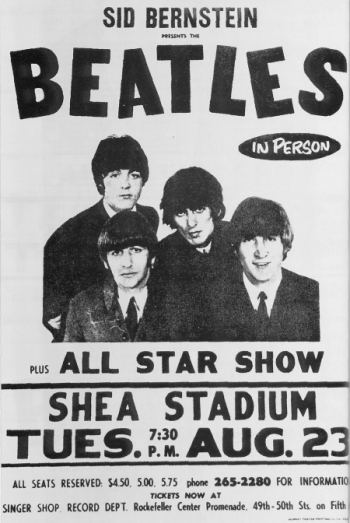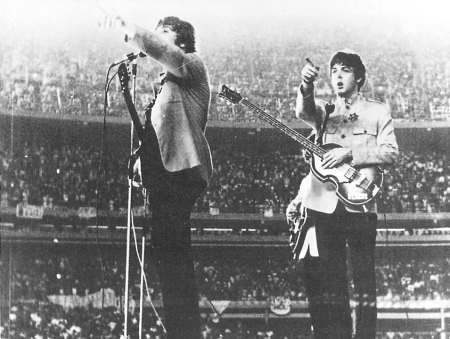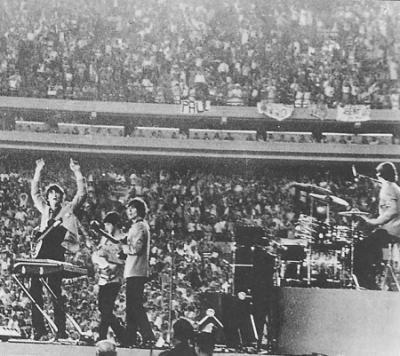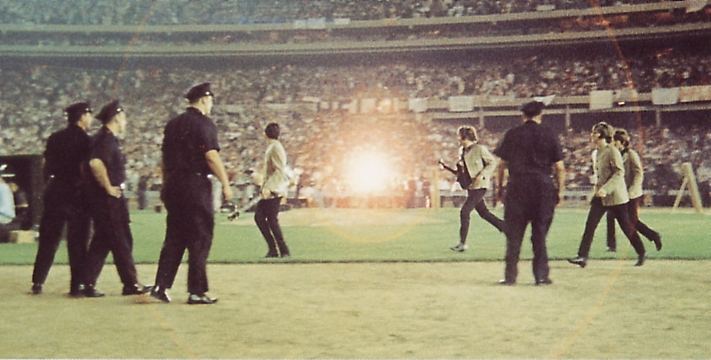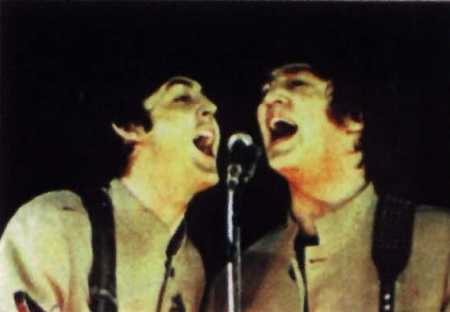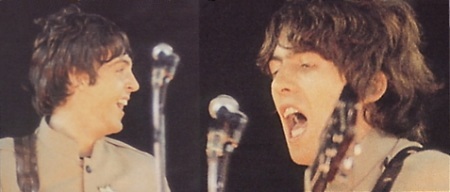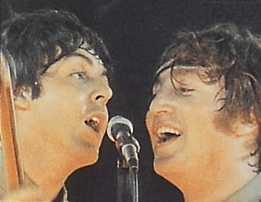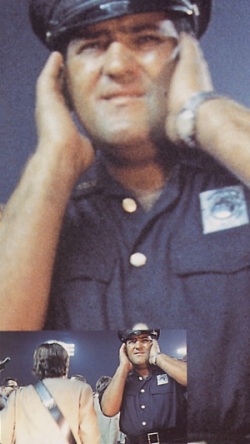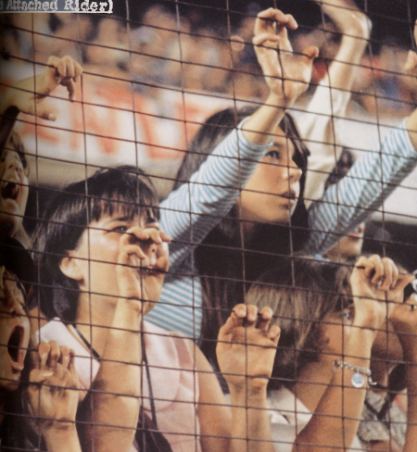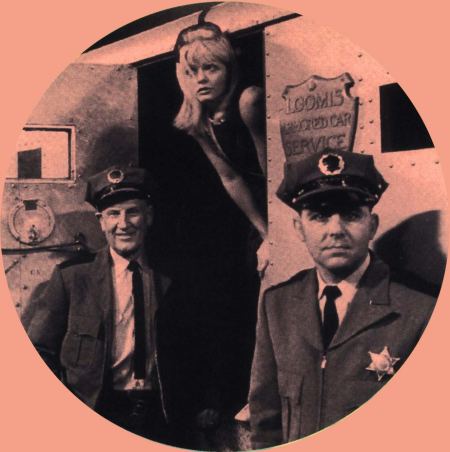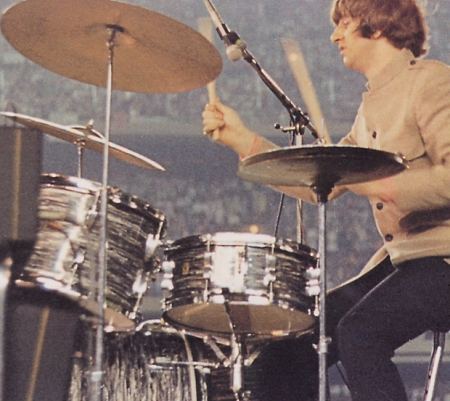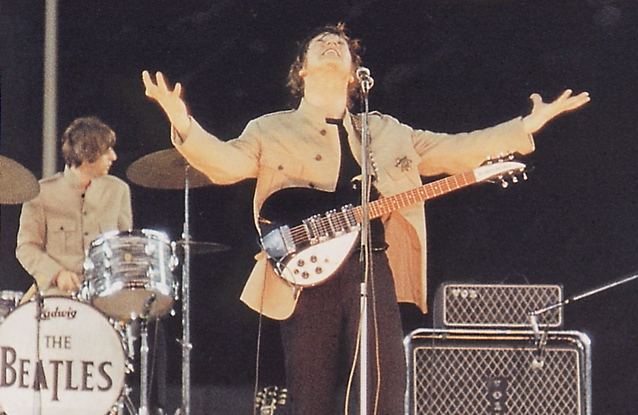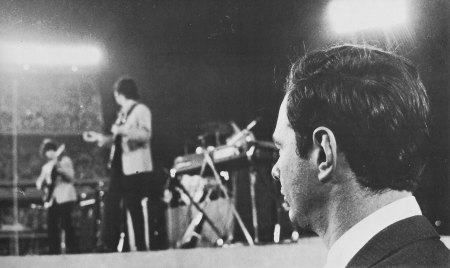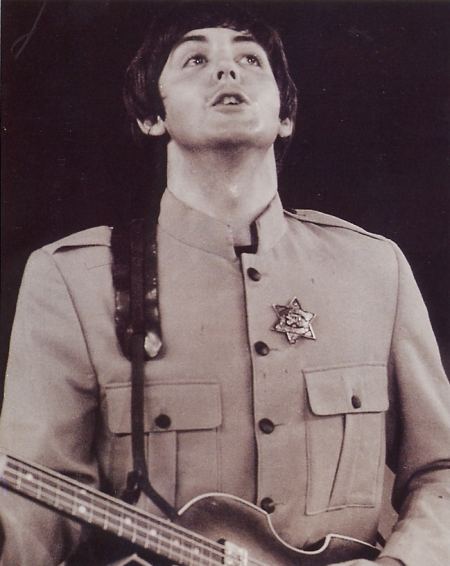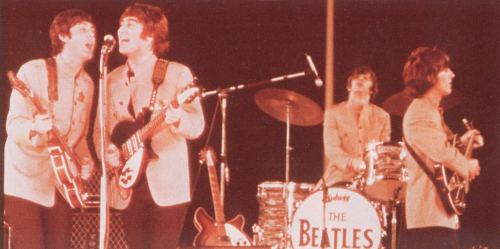Concert At
Shea StadiumAugust 15th, 1965.
This page is dedicated to a main event in the Beatles' history: the concert that they performed at the Shea Stadium, in August 1965, which probably remains the greatest and the craziest live moment of their career.
(adapted from the chronicles and diaries by Mark Lewisohn and Barry Miles)
Advertisement for the second Shea concert in 1966.
|
|
Two months before, The Beatles had started an European Tour which had opened in Paris on June 20th. Then, the Tour had taken the band to Lyon and Nice, France, and to Italy and Spain. The third Beatles' US tour started on August 13rd when the band took off from Heathrow and landed at JFK. On that same day, the US version of Help! was released by Capitol. The US Tour would last until the end of the month and would lead the boys to New York, Atlanta, Houston, Chicago, Minneapolis, Portland, San Diego, Los Angeles and San Francisco. | |
| Heathrow airport, 13 August 65. Departure to NY. |
|
On
next day, August 14th, The Beatles went to the CBS studios for some
rehearsals before recording a live tape for The Ed Sullivan Show in the
evening. |
|
|
|
|
||
|
|
This concert had to be popularized through the media and no less than a dozen of cameramen staffs were ready to follow the Beatles' travel from their hotel to the stadium. A planned spectacular entry into the stadium by helicopter, landing on the baseball playing area, was first decided by the authorities of New York. Instead, the group travelled both by car and by helicopter to reach the stadium. The police feared that fans would jam the tunnels in and out of Manhattan so the group was first escorted by limousine to the Manhattan East River Heliport and from there they flew over New York City to the roof of the World's Fair building in Queens. There they transferred from the helicopter to a Wells Fargo armoured van where they were each given a Wells Fargo agent badge. |
|
|
|
||
|
As usual for those days, there was a full bill, and the 55,600 fans sat through the King Curtis Band, Cannibal and the Headhunters, Brenda Holloway, The Young Rascals and Sounds Incorporated before Ed Sullivan finally walked on stage to announce The Beatles:
Rushing out from the Wells Fargo van which had driven them into the stadium, The Beatles finally sprinted through a tunnel, out into a deafening wall of screams and onto the stage positioned at second base. |
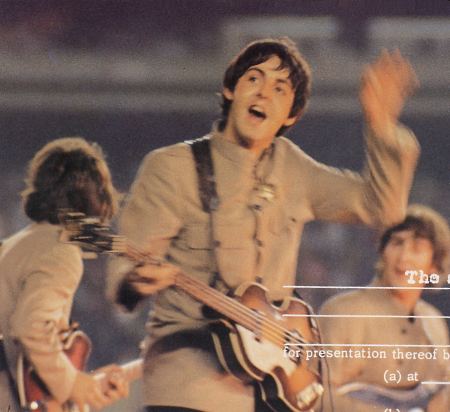 |
|
|
The
band did their
standard 30-minute set of a dozen numbers and then, jumped straight back into
the Wells Fargo van to escape the stadium.
|
||
|
|
||
|
|
||
